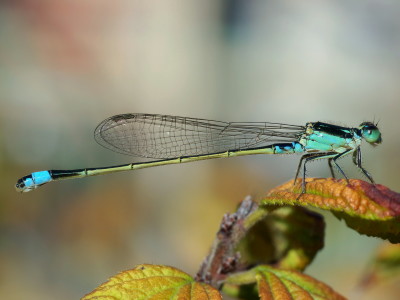Learning from the behavior of ants, the emergency exit design method that enables more escape

In a room where many people gather and have a certain size, you can escape safely even in case of emergencyEmergency exitThe establishment of the law is stipulated by the law. In order to secure an efficient evacuation route, it is necessary not to place obstacles around emergency exits, but as a result of a series of experiments conducted under specific conditions using ants, The result which can be said to be surprising that the obstacle is placed before the emergency exit is that the speed of escape becomes faster became clear.
Want to Get Out Alive? Follow the Ants - Issue 13: Symmetry - Nautilus
http://nautil.us/issue/13/symmetry/want-to-get-out-alive-follow-the-ants
The subjects of these experiments are also classified as large in aliaceaeCuba antThe verification was progressed by observing the ecology. Professor Ernesto Arschler of the University of Havana who conducted the experiment said, "Although humans and ants are very different creatures," even if humans are in a panic condition, it is possible to show a very basic reaction close to instinct I understand that it can be related to the movement of ants, "he says about the validity of the experiment.
◆ Experiment 1: Concentrated behaviors seen during panic
The base experiment was carried out by Professor Arschler in 2005 and it was used for experiments with an escape port on the wallPetri dishValidation was done using. Ali was put in a petri dish having escape mouths in two symmetrical two places, and when ants dropped the liquid which ants hate from the top, they were put into a panic state, and their behavior patterns were observed.
The state of the experiment can be confirmed in this movie. The exit is set at two places on the left and right, but from the exit on the right there are a few going out first at the first few, and many of the rest go out one after another while gathering to the left side.
In this experiment, it was confirmed that there is a habit of concentrating on one of the outlets where more individuals are gathered, even if there are two exits which should be the same probabilistically It was. This is the habit possessed by creatures that form swarms like ants, based on the instinct that enhances the possibility of collective survival by bringing each other's body in case of feeling of danger It is thought.
◆ Experiment 2: rectification effect by obstacles
Based on this experiment, Melbourne AustraliaMonash UniversityMr. Narayan Siwakoti who studies group dynamics at Mr. Shimadzu conducted further experiments. I tried to escape to investigate the behavior that the group falling into a panic condition shows, but by arranging obstacles near the exit where there is only one dare in the experiment, how to move the group It will examine whether it is affected.
The picture at that time is here. By putting liquid in a dish where ants are densely populated, the group falls into a panic state and attempts to escape with a single outlet exit. According to habits, many ants concentrate at the exit, but you can see how ants get out very smoothly from the exit despite being blocked by obstacles.
It was also expected that when the panic occurred in the exit limited environment, the density got dramatically increased and it became impossible to move, but from this experiment the obstacles placed near the escape port panic Instead of disturbing the flow of the falling group, it was confirmed the possibility of having the effect of realizing a smooth flow by rectifying in reverse.
◆ Difference depending on the position of escape mouth
In addition, Mr. Siwakoti verified the relationship between the position of the escape port and the presence or absence of obstacles by using a tetragon petri dish different from the previous round. Firstly, when it was verified with a petri dish having a escape port at the center of the straight wall surface, the time taken for all 50 ants to escape was18 secondsResult has come out. The escape time when an obstacle is placed in front of the escape port is14 secondsIt was demonstrated that the time it takes to take less than the state without any obstruction will be shortened.
Next, the escape time in the case where an escape port is provided in a portion corresponding to the corner of the rectangle and an obstacle is placed before that is11 secondsAs a result that it is further shortened. However, the fastest time in this verification was recorded because there was an escape port at the corner, and before that an obstacle was not placed9.5 secondsIt was.
About this result, Mr. Siwakoti said, "If you have an escape port in the center of the wall, ants trying to escape will be in a state that they concentrate from three directions, right and left of the wall, and linear direction," In this case, the exit portion becomes overcrowded, and the escape port exceeds the capacity of the processable flow rate. Therefore, I point out that the flow of ants was greatly hindered and I recorded the worst result of 18 seconds.
On the other hand, in the case where an obstacle is placed, the flow of ant wielding in the wall is rectified to flow from the left and right of the wall, so the flow rate in the vicinity of the escape port is restricted, and a space suitable for realizing a smooth flow Efficient escape became possible by being secured, leading to results of 18 seconds → 14 seconds.
Basically it is for the same reason that the case of "horn escape mouth + no obstacle" came the best result. The space surrounded by the wall of 90 degrees naturally restricts the flow rate, and since there is no obstacle obstructing flow purely, the most efficient flow is produced and recorded a time of 9.5 seconds. The escape time increased from 9.5 seconds to 11 seconds by putting an obstacle in that state can be said to be because the originally proper flow rate was simply hindered.
It is believed that these results basically apply the same tendency to human behavior. This is because animals with habits of acting in groups like this ant and humans have common habits of reducing risk by creating flocks when danger comes.
For example, when carnivorous animals attack a flock of small animals seeking food, small animals try to raise the probability of survival by making a flock. This is based on the property that when a captured person is striking one object, it can not aim at the objects in the vicinity. As the number of objects increases, the predator's consciousness becomes "cognitive overload" It is said to act instinctively to cause a "predator confusion effect" that is in a state and falls into a confused state. This instinct is also provided in our human beings whose reasons have developed greatly, and it has been revealed that this tendency becomes stronger especially when panic when the control of reason is weakened.
Even so far, so to speak, it is impossible for people trying to escape to concentrate, so to speak,Grid lockAlthough it was known that a situation similar to that occurred, a series of experimental results revealed that it comes from the instinct of living organisms. The approach to dare to install obstacles is not to be carried out easily, but it shows the possibility of establishing a more effective means of emergency escape.
Related Posts:







